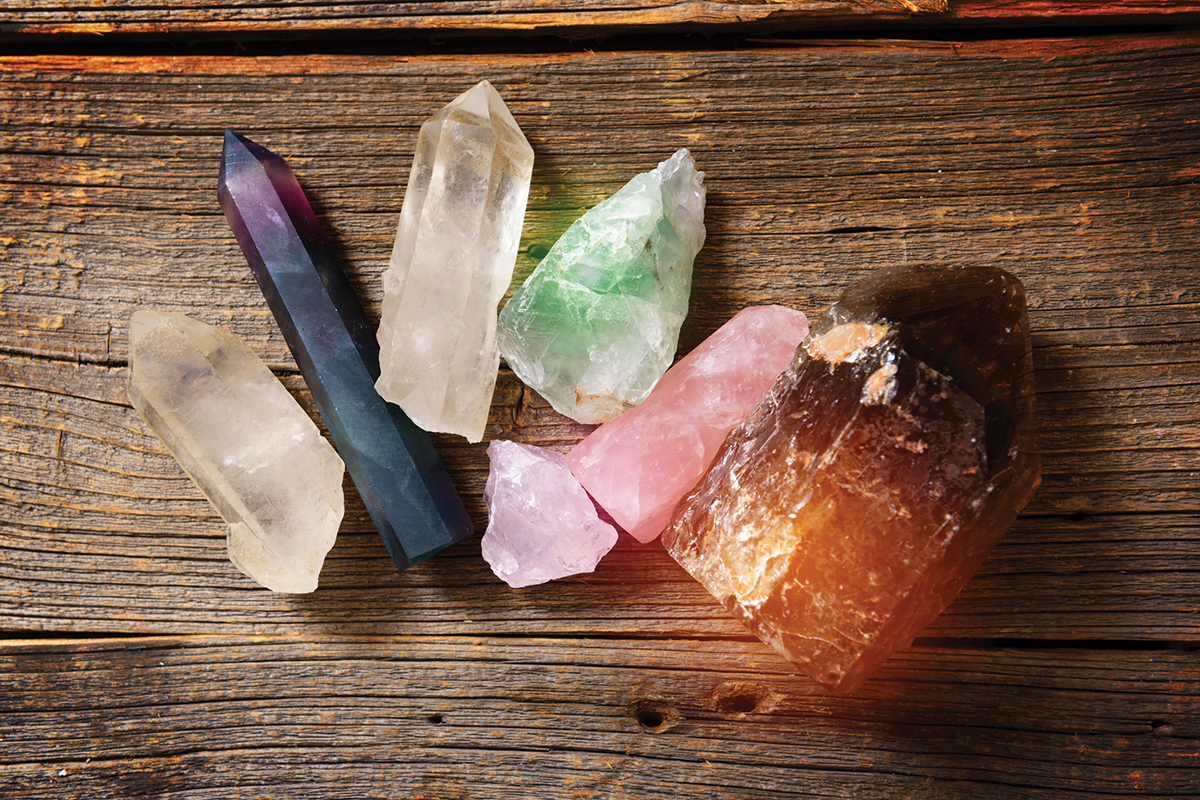A row of six multicoloured crystals sits on the ledge of Lynda Narducci’s kitchen window in her home in Hamilton. Each morning, she gazes at the shiny stones — an emerald, rose quartz, black obsidian, carnelian, amethyst and clear quartz — and often puts one or two in her pocket.
“When I carry crystals, I feel protected. Most importantly, I feel calm,” says the 56-year-old personal trainer and holistic wellness coach, who started buying crystals after a difficult divorce nine years ago. “Everything in nature has a purpose, including crystals.” Besides, she adds, “They look pretty.”
You may unsubscribe from any of our newsletters at any time.
In addition to being pretty, these gemstones are hugely popular. Many believe they emit energy and vibrations that have a positive effect on physical and emotional well-being. They represent an estimated $1-billion industry globally, according to expert collector Daniel Trinchillo. Sales are fuelled by the public’s appetite for alternative medicine and a fascination with ancient practices. The Crystal Bible features an index of ailments along with recommended crystals — pink kunzite for depression, topaz for inspiration and citrine for wealth.
Joey Wargachuk, 34, works at Happy Soul, a metaphysical shop in Toronto that specializes in crystals. He says his customers range from lovelorn singles to corporate executives looking to boost their careers. “Basically, people come here to improve their lives,” says Wargachuk, who keeps a large $700 slab of citrine on his coffee table to help him maintain a positive mindset. “These stones are a gift from the Earth. They are organically formed over millions of years and vibrate energy.”
While their energetic properties have been harnessed for technological uses — crystalline silicon powers computer processors, and liquid crystal displays are used in cellphones — there’s no science to prove that crystals can heal people. A 2001 study from the University of London revealed that there was no real difference between what participants felt while holding genuine crystals and what they felt holding fake ones — any positive effects were the result of the power of suggestion. Still, Christopher French, the psychologist who headed the study, acknowledged that people who put their faith in them “may gain some small psychological benefit.”
Kelly Neff, a psychologist who writes for the website themind-unleashed.com, says even if there’s no proof that crystals work, she believes in them anyway. “Maybe this is just the placebo effect and these crystals that resonate so deeply with me are just dumb rocks, but on some deeper, spiritual level, I know that this is not the case,” she writes. Neff points to the use of crystals in history: Egyptians buried their dead with quartz on the forehead to guide them into the afterlife, and Cleopatra ground lapis lazuli into blue eyeshadow believed to enhance wisdom. Even the Bible makes a number of references to crystals. The book of Revelation describes the foundation of the New Jerusalem as being “adorned with every jewel” (21:19), including sapphire, chrysolite, carnelian and jacinth.
Narducci — who considers herself spiritual but not religious, yet is still attached to her Catholic identity — doesn’t have a problem reconciling New Age crystals with the faith of her childhood. She acknowledges that the Catholic church would likely frown on her crystal collection, but she asks, is it really so different “from the positive effects we might get looking at coloured stained glass windows in a church?”
This story originally appeared in the January 2018 issue of The Observer as part of the regular column “Spiritual but secular.”













